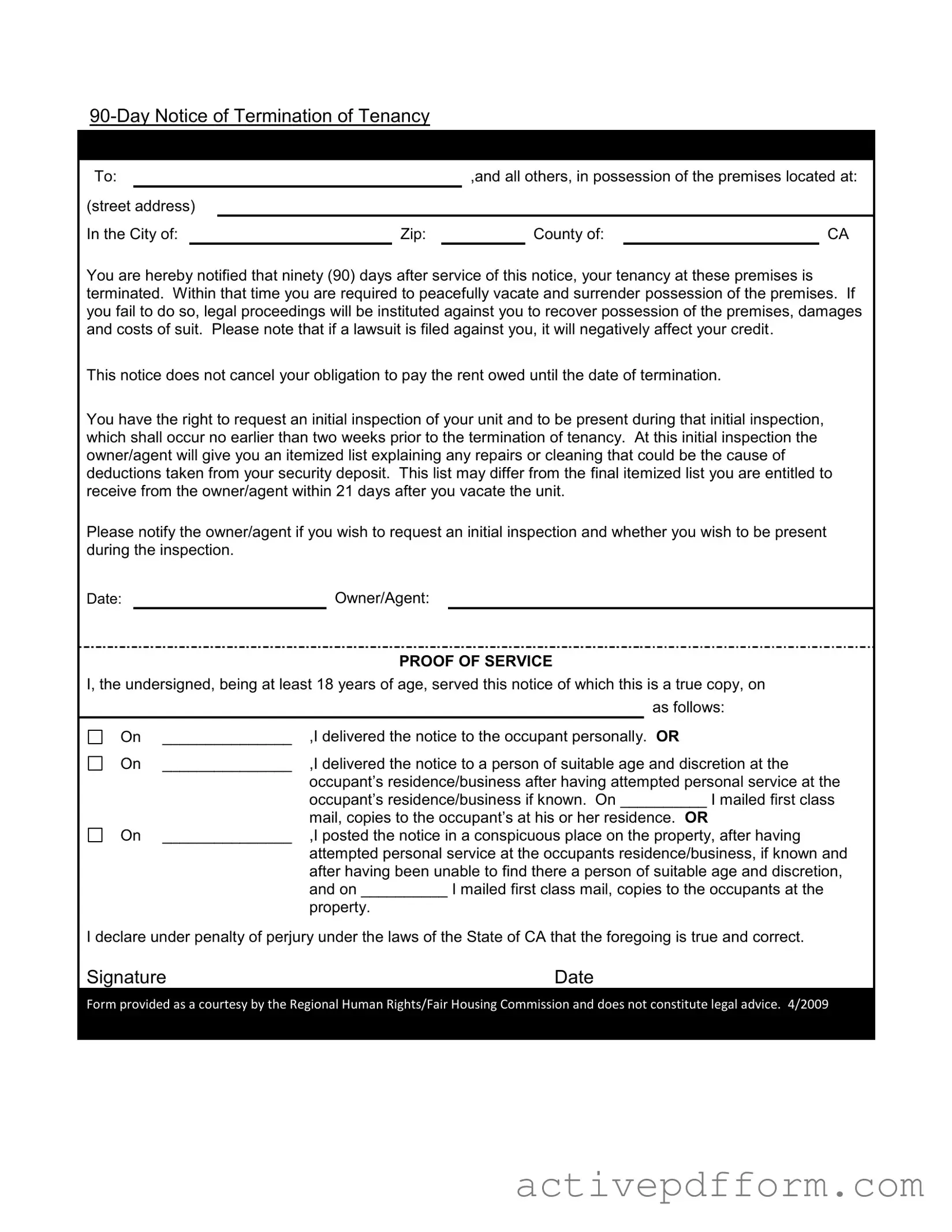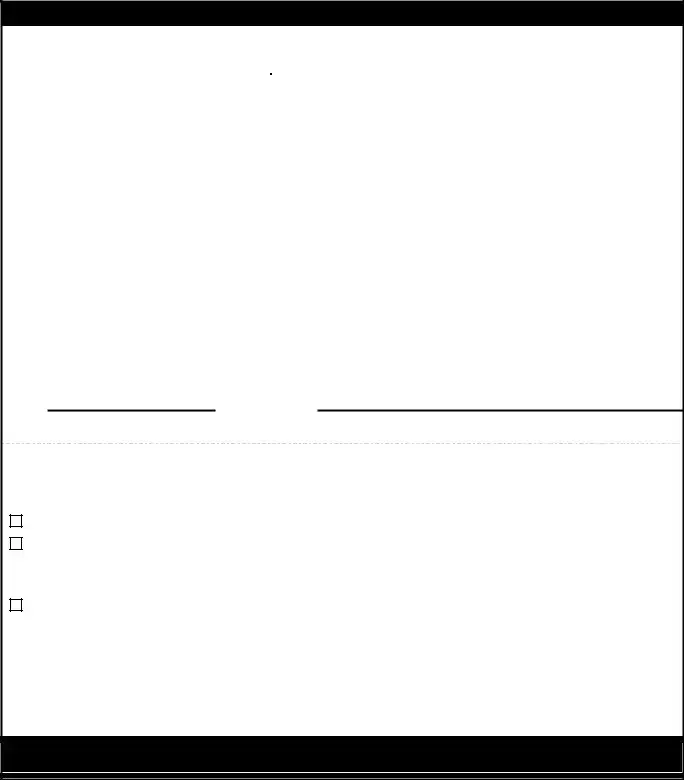What is the 90-Day Notice To Move Out form?
The 90-Day Notice To Move Out form is a legal document used by landlords to inform tenants that their tenancy will end in 90 days. This notice gives tenants time to prepare for moving out and ensures that they understand their obligations during this period.
How does the 90-Day Notice affect my tenancy?
Once you receive the notice, your tenancy will officially terminate 90 days after it is served. During this time, you are expected to vacate the premises peacefully. If you do not leave by the deadline, the landlord may begin legal proceedings to recover possession of the property.
What happens if I don’t move out by the deadline?
If you fail to move out by the end of the 90 days, your landlord can take legal action against you. This may include filing an eviction lawsuit, which can negatively impact your credit score and make it harder for you to rent in the future.
Do I still have to pay rent during the notice period?
Yes, you are still responsible for paying rent until the termination date specified in the notice. Failing to pay rent during this period can also lead to legal consequences.
Can I request an inspection of my unit?
Absolutely. You have the right to request an initial inspection of your unit. This inspection can take place no earlier than two weeks before your tenancy ends. Being present during the inspection allows you to understand any potential deductions from your security deposit.
What should I expect during the initial inspection?
During the initial inspection, the landlord or their agent will provide you with an itemized list of repairs or cleaning that may affect your security deposit. This list may differ from the final list you receive after you move out, which will be provided within 21 days.
How do I request an initial inspection?
To request an initial inspection, simply notify your landlord or their agent. Make sure to specify whether you would like to be present during the inspection. It’s best to do this as soon as you receive the 90-Day Notice.
What if I don’t receive the 90-Day Notice in person?
The notice can be served in several ways, including personal delivery, delivery to someone of suitable age at your residence, or by posting it on the property. If you believe you did not receive it properly, you may want to discuss this with your landlord or seek advice on your options.
Is this notice legally required?
Yes, in California, landlords are required to provide a 90-Day Notice to terminate a tenancy under certain circumstances. This requirement helps ensure that tenants have adequate time to find new housing and move out without feeling rushed.

